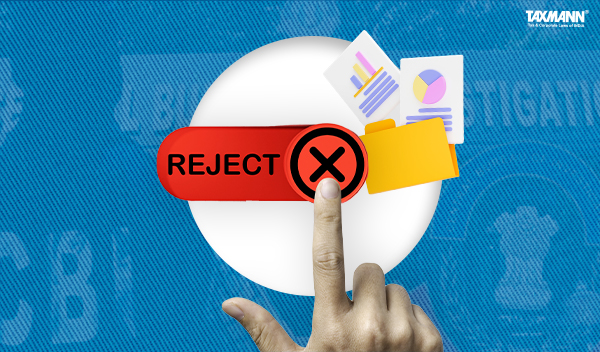SAFEMA Set Aside Attachment of Amount Seized by CBI for Ignoring Sec. 5(1)(b) of PMLA | Reattachment Allowed Post-Release
- Blog|News|FEMA & Banking|
- 2 Min Read
- By Taxmann
- |
- Last Updated on 17 October, 2024
Case Details: Venkateshwar Rail Nirman (P.) Ltd. v. Deputy Director, Directorate of Enforcement - [2024] 167 taxmann.com 306 (SAFEMA-New Delhi)
Judiciary and Counsel Details
- Munishwar Nath Bhandari, Chairman & Balesh Kumar, Member
-
Arshdeep Singh Khurana, Sulakshan S.V., Nikhil Pawar, R.K. Mohit Gupta & Ankur Chawla, Advs. for the Appellant.
-
Aditya Singla, Adv. for the Respondent.
Facts of the Case
In the instant case, an FIR was registered for an offence under Section 120-B IPC read with Sections 7,8 and 10 of the Prevention of Corruption Act, 1988 (PC Act). It was alleged that one M, a Member of the Staff Railway Board, along with others, committed an offence under the Act in connivance, thereby attracting an offence under Section 120-B of the IPC.
The amount of Rs.89.68 lakh was recovered by the CBI and seized under the order of the CBI Court. The respondent subsequently attached the amount. It was noted that the attachment of property is permitted when it is likely to be concealed, transferred or alienated to frustrate proceedings of confiscation.
In the instant case, the CBI seized the `proceeds of crime’, and the amount now remains under seizure pursuant to an order of the CBI Court. However, the ED failed to clarify how the said amount was likely to be concealed, transferred, or dealt with in any manner that would frustrate confiscation proceedings.
Appellate Tribunal Held
The Appellate Tribunal held that the attachment of the amount was made in ignorance of the mandate of Section 5(1)(b) of the 2002 Act and, accordingly, the attachment was to be set aside.
However, liberty was granted to re-attach the amount if it was released by the CBI Court. Therefore, the respondent would be at liberty to pass a fresh order of attachment of the amount, if so warranted at the relevant time and for it, the instant order would not come in their way.
Disclaimer: The content/information published on the website is only for general information of the user and shall not be construed as legal advice. While the Taxmann has exercised reasonable efforts to ensure the veracity of information/content published, Taxmann shall be under no liability in any manner whatsoever for incorrect information, if any.

Taxmann Publications has a dedicated in-house Research & Editorial Team. This team consists of a team of Chartered Accountants, Company Secretaries, and Lawyers. This team works under the guidance and supervision of editor-in-chief Mr Rakesh Bhargava.
The Research and Editorial Team is responsible for developing reliable and accurate content for the readers. The team follows the six-sigma approach to achieve the benchmark of zero error in its publications and research platforms. The team ensures that the following publication guidelines are thoroughly followed while developing the content:
- The statutory material is obtained only from the authorized and reliable sources
- All the latest developments in the judicial and legislative fields are covered
- Prepare the analytical write-ups on current, controversial, and important issues to help the readers to understand the concept and its implications
- Every content published by Taxmann is complete, accurate and lucid
- All evidence-based statements are supported with proper reference to Section, Circular No., Notification No. or citations
- The golden rules of grammar, style and consistency are thoroughly followed
- Font and size that’s easy to read and remain consistent across all imprint and digital publications are applied






 CA | CS | CMA
CA | CS | CMA


